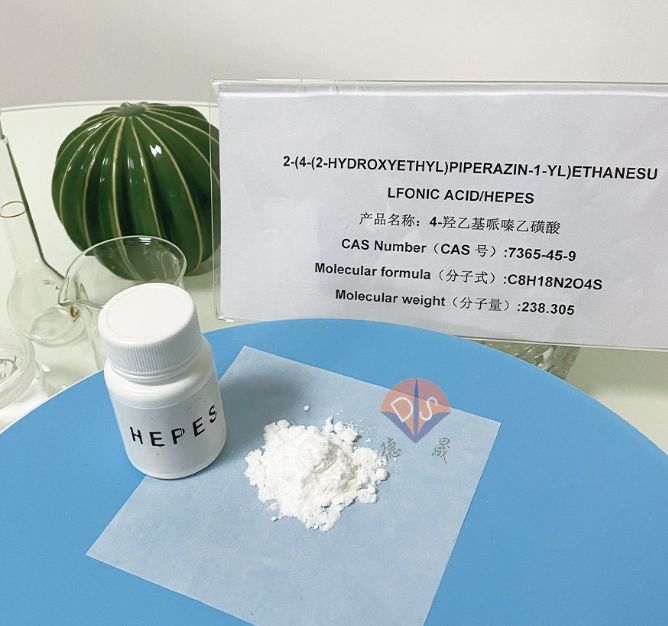The key role of HEPES in cryo electron microscopy and X-ray crystallography
Release time:
2025-06-04
HEPES (4- (2-hydroxyethyl) -1-piperazineethanesulfonic acid) has been widely used as a biological buffer in cryo electron microscopy (Cryo EM) and X-ray crystallography due to its excellent pH stability and low metal ion binding properties. Below, we will provide a detailed introduction to its specific applications and roles in these two technologies.

HEPES buffer
1、 Application of HEPES in Cryo EM
PH stability: HEPES can maintain stability within the physiological pH range of 7.2-7.6, which is crucial for maintaining protein conformation. When preparing cryo electron microscopy samples, rapid freezing at low temperatures is required, and HEPES can prevent protein denaturation or aggregation caused by pH fluctuations.
Reduce background noise: Due to the absence of heavy metal ions, HEPES does not increase electron scattering background, thereby improving imaging quality.
Compatibility: It can be used with cryoprotectants such as glycerol or sucrose to help prevent ice crystal formation from damaging the sample structure.
Application scenario: Especially suitable for the study of membrane proteins such as GPCRs and ion channels, as it can ensure the solubility and stability of membrane proteins.
2、 Application of HEPES in X-ray crystallography
Optimize crystallization conditions: HEPES is a common component of crystal screening kits (such as Hampton Research's crystal sieve), especially in pH sensitive protein crystallization experiments, where HEPES can replace its products such as Tris.
Research on metal ion dependent proteins: They have low chelating ability for divalent metal ions such as Mg ² ⁺ and Ca ² ⁺, making them suitable for studying metal dependent protein structures such as metalloenzymes or nucleic acid protein complexes.
Promote crystal growth: By maintaining a stable pH environment, reduce defects during crystal growth and improve diffraction quality. This is particularly important in the cultivation process of certain viral proteins or ribosomal crystals.
Application scenario: In membrane protein crystallography, when used in combination with detergents such as DDM, HEPES helps maintain protein solubility and dispersibility.
3、 Advantages of HEPES
Low temperature sensitivity: The pKa of HEPES varies very little between 4 ° C and 37 ° C (Δ pKa ≈ 0.014/° C), making it an ideal choice for low-temperature cryo electron microscopy and crystallographic data collection.
Chemical inertness: does not react with protein active sites or crystallization reagents, and does not interfere with the structural analysis process.

Product packaging
4、 Precautions for use
Concentration limit: The recommended concentration is usually 10-50 mM, as excessively high concentrations may interfere with protein-protein interactions or crystallization processes.
Free radical sensitivity: Free radicals may be generated in strong light or oxidative environments. It is recommended to store in the dark or add DTT to prevent this situation.
In summary, HEPES buffer, with its excellent pH stability and low interference properties, provides strong support for cryo electron microscopy and X-ray crystallography, and provides important guarantees for high-resolution structural analysis. Desheng New Materials focuses on producing a variety of high-quality biological buffering agents, including HEPES, to ensure product purity and batch consistency, providing reliable support for scientific research.
Contact details
Contact number
Address: C8, Guanggu United Science and Technology City, Ezhou City, Hubei Province
Fax:0711-3704 589
Follow us



